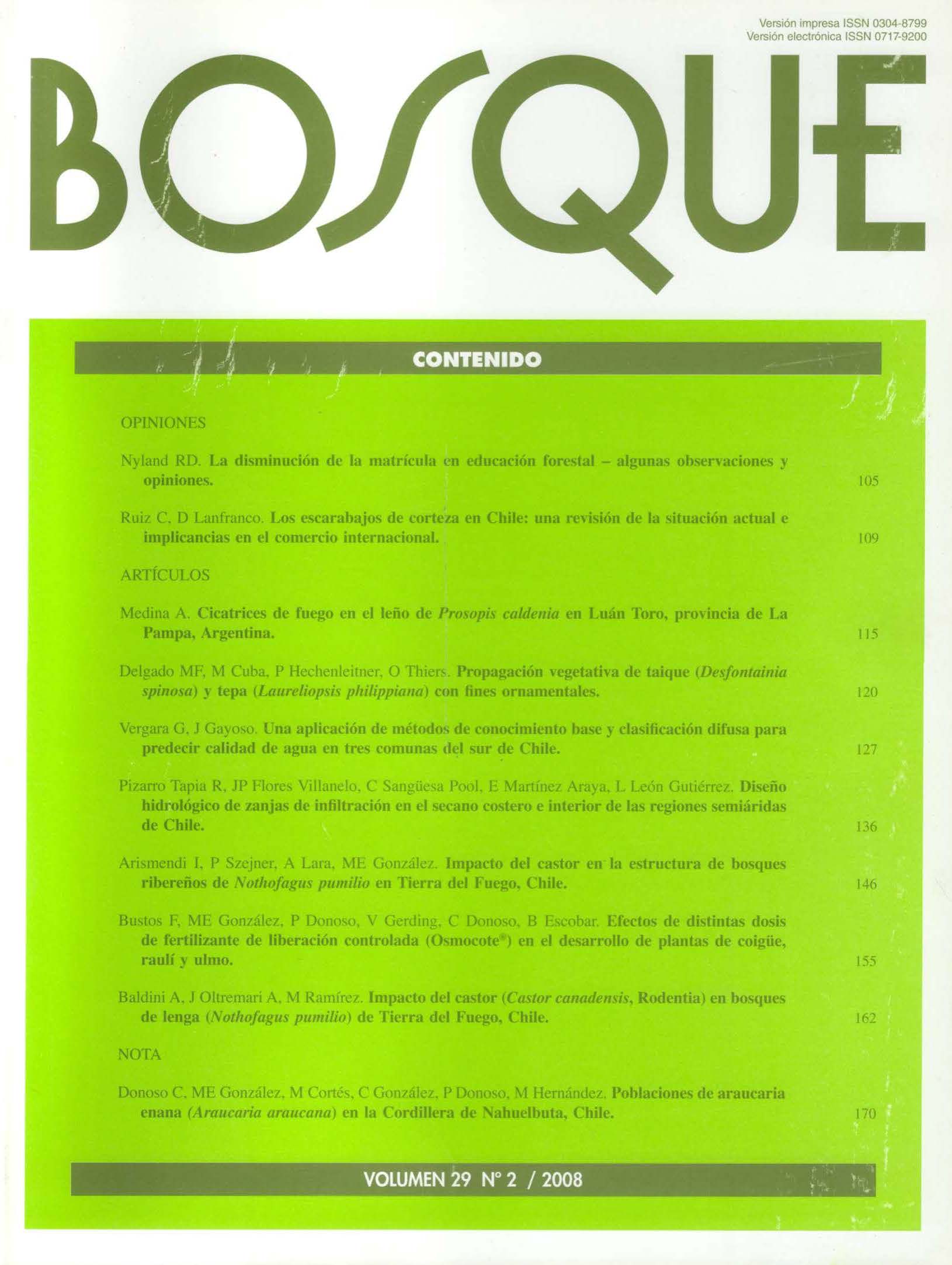Impact of beavers on Nothofagus pumilio riparian forest structure in Tierra del Fuego, Chile
Main Article Content
Abstract
Beaver (Castor canadensis) is an exotic species that was introduced to Tierra del Fuego in 1946. Beaver dams have altered riparian areas existing before their invasion. This study evaluates the impact of beavers on the N. pumilio riparian forest structure in sites with and without beavers in two locations on Tierra del Fuego Island. At both sites, density, diametric distribution and basal area for alive and dead trees were measured. Most trees damaged by beavers were saplings or corresponded to a lower diameter class (< 25 cm, DBH). It was possible to observe that sites with beavers located in both sectors had individuals with significant lower diameter (P < 0.01). Also, sites with beavers had an individual mean density (Río Bueno 868 trees ha–1 and Vicuña 997 trees ha–1) higher than that from sites without beavers (Río Bueno 325 trees ha–1 and Vicuña 656 trees ha–1). This suggests that beavers differentially select invasion sites depending on the riparian forest structure, preferring places with high presence of saplings and trees with less than 25 cm diameter. One of the main impacts due to the establishment of beavers is the change in a diametric structure presented by stands in the riparian area. Due to the constant foraging from beavers, in the long-term an important alteration to the structure of the N. pumilio riparian forest in Tierra del Fuego may occur.

